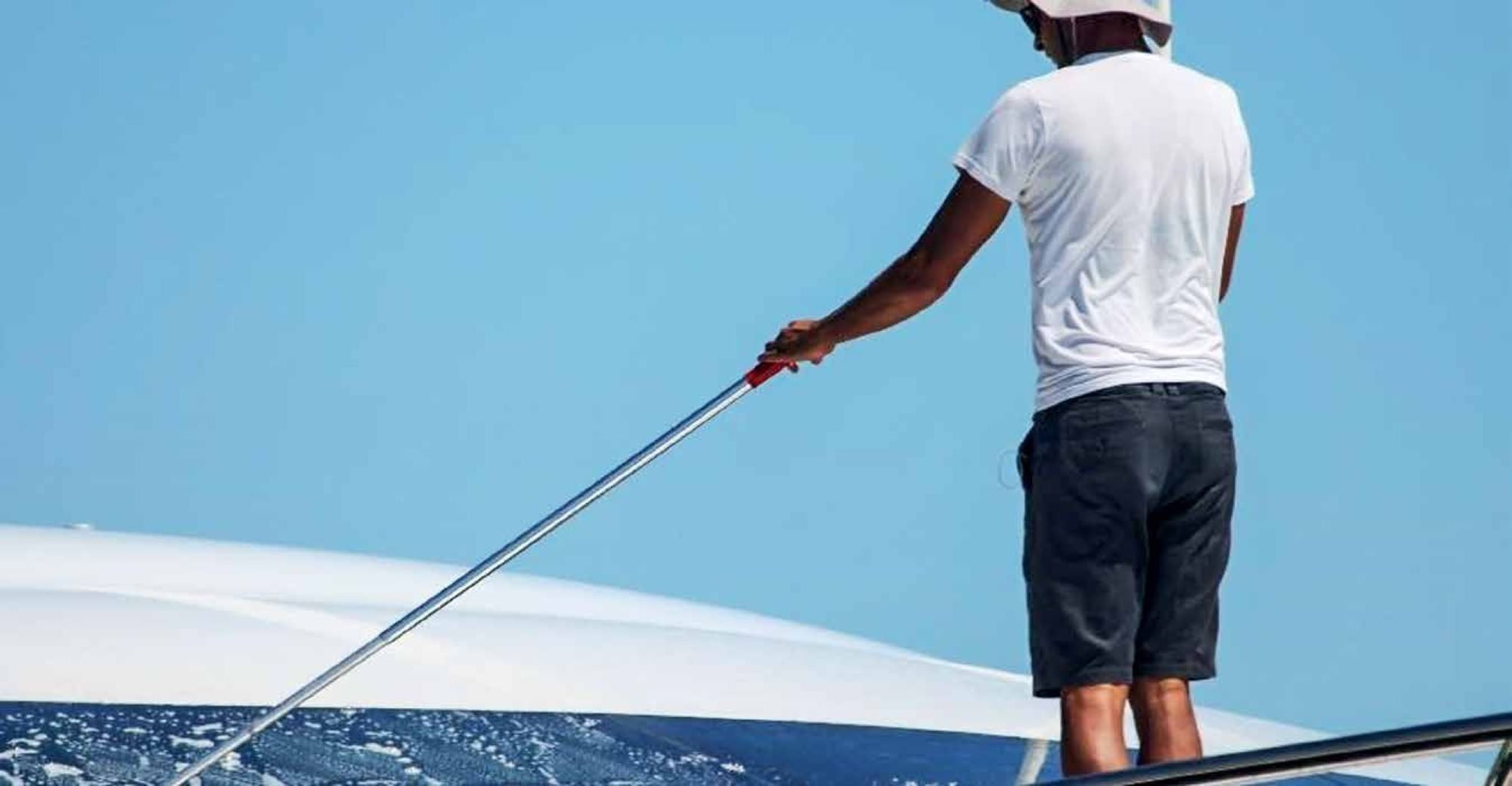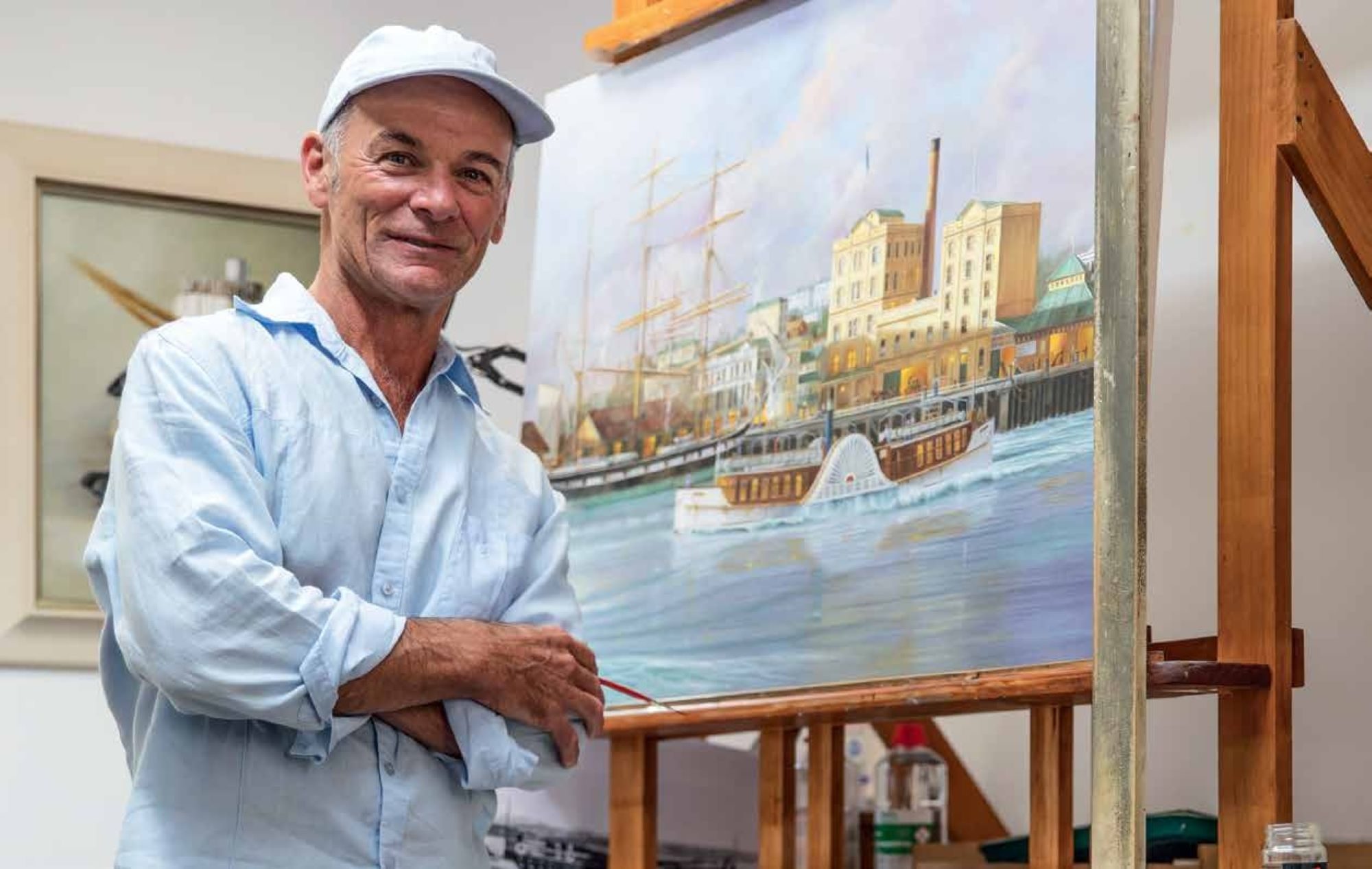

Time to burn is the phrase you see on the SailGP race starts, which tells the driver how much time they need to ‘wash off’ (lose) if they want to start the race bang on the gun.
I was introduced to the terminology through Morgan Brodie – Branch and OEM Manager of Lusty and Blundell Tauranga.
Lusty and Blundell – the agent for Raymarine – recently introduced additions to the performance sailing market with a new Alpha series display, new Smart Wind Technology and performance sailing upgrades to the LightHouse operating system for Axiom chartplotters.
This might sound like a mouthful, but in reality it’s a nice upgrade for racing skippers looking for next level displays and data analysis of their own yachts.

Alpha Displays
The most noticeable part of the system is the new Alpha displays which are available in 7-inch and 9-inch ‘bright’ units. Brightness is a whopping 1500 nits which is clear to see in bright sunlight. They are touchscreens and you can also see them wearing polarized sunglasses.
The displays can be set up with different windows of data, and are fully customizable to the data you want displayed.
I was invited out for a Wednesday night race on Tauranga Harbour by Morgan who is a part owner of Frenzy – a Lambert 35 – and a well-known yacht on the local racing scene.

The invitation was to experience firsthand the Alpha displays in action and see how they were used in practice, how they integrated with other onboard instruments, and hopefully how that all translated into improved sailing performance.
Test conditions were rather extreme – a southwesterly blowing 25 knots gusting 35. It was marginal whether the race would go ahead, but we got the call: the race was on (subject to all crew wearing life jackets).
Fortunately, I had my full wet weather gear, which was fully tested upwind in big waves generated from the wind pushing against Tauranga Harbour’s prodigious tide.
Morgan demonstrated the base unit for the system – an Axiom Chartplotter display. It was mounted on a swing arm, allowing it to be seen from the helm when required or tucked away inside the cabin.
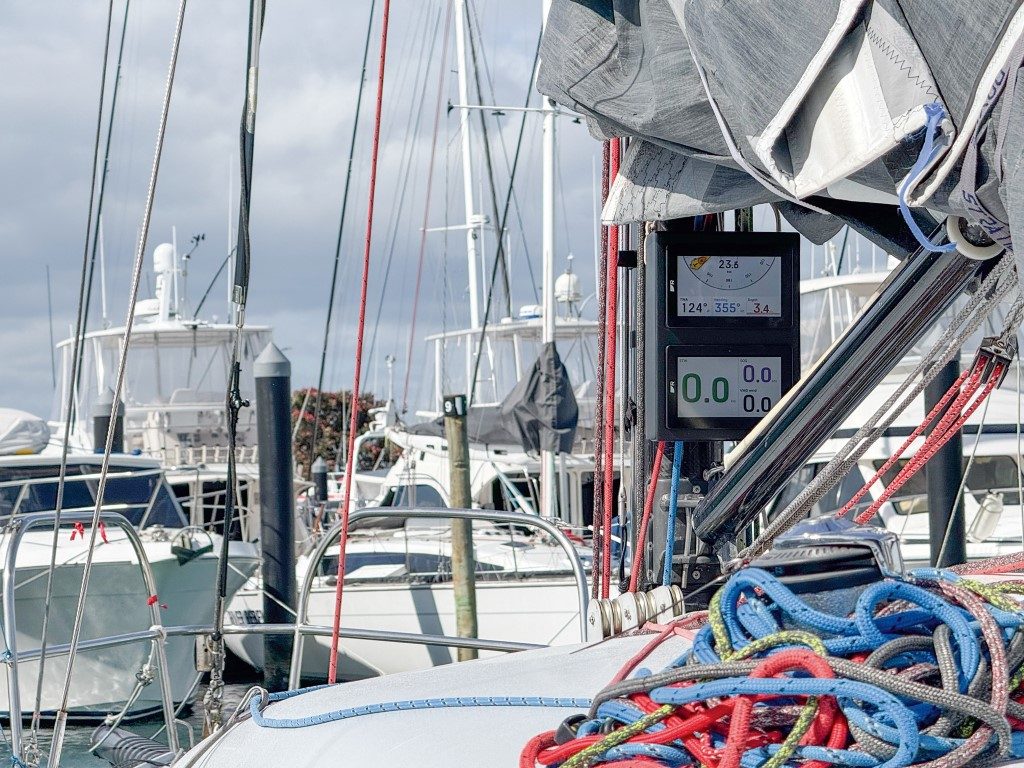
The base unit takes all the instrument inputs and – using Raymarine’s LightHouse software – calculates all the required output data.
Wind
A key input is obviously wind data. This is where some smart Raymarine thinking and technical developments have made a big improvement to accurate wind measurements.
Morgan explained that the new wind wand at the masthead had a built in AHRS gyro – or 3D motion sensor. This means the wind reading allows for the mast movement (yaw, pitch and roll) as well as mast twist and wind upwash.
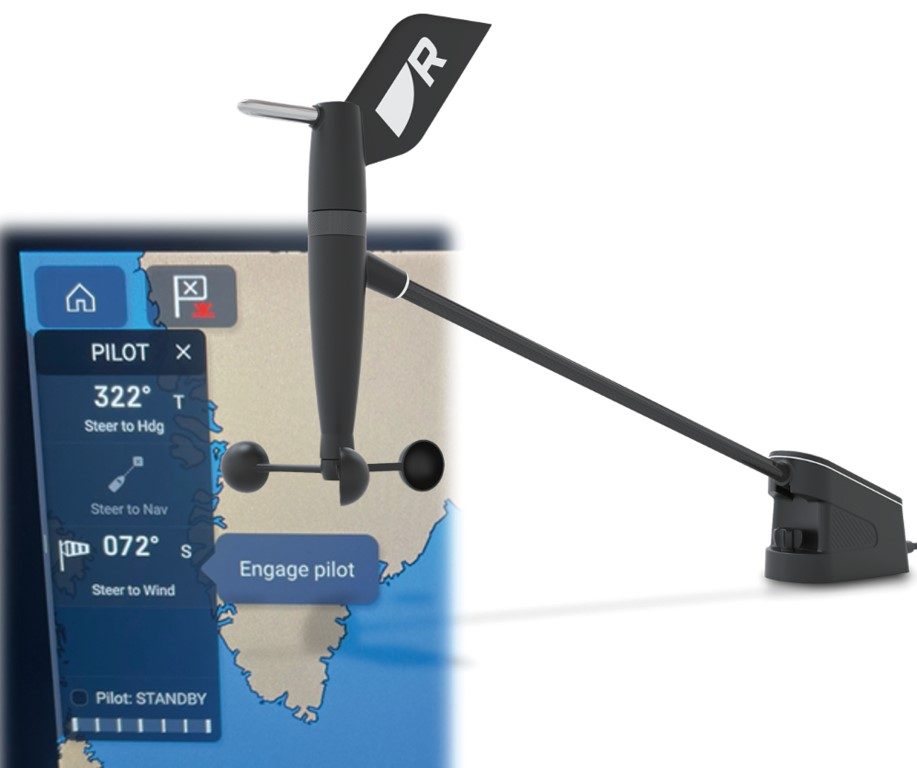
Effectively, it’s calculating what the real wind is all the time allowing for all the movements taking place. This gives a more reliable and accurate measurement.
The wind wand on Frenzy sends the data via cable to the Axiom base unit.
Polar Manager
The Axiom base unit allows for the direct input of performance polars of an individual yacht. These can be provided by designers for a range of production yachts, or through polar tables developed by third party applications such as PredictWind.
This means the strategist can determine accurately and reliably what the heading and fastest sail combination is for each leg of the race, and update that in real time as the wind changes.
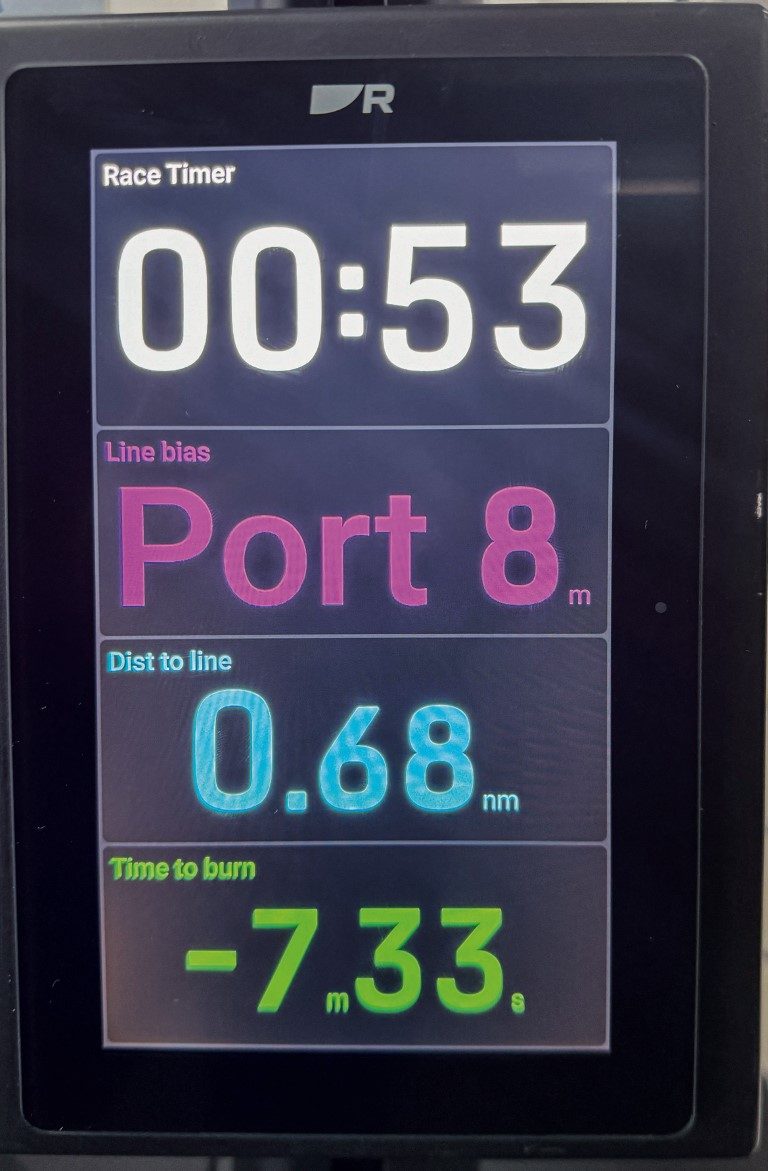
It takes the guesswork out of sail choice and could make the difference between winning and losing, particularly if you avoid a costly sail change.
Target Speed & Heading
Based on the boat’s speed polars, target heading and speed can be displayed for the helmsperson. Nice graphics have been utilised to help the helmsperson with little targets (green for starboard or red for port tack). The idea is to keep the green inside the target circle.
“Target heading and speed graphic (the horizontal line on the blue indicates below target speed – it should be at the top of the blue band).”
Theory into Practice
Well, how did our around-the-buoys race turn out and how did the instruments help?
First of all, a well-drilled crew very familiar with the yacht helps enormously. No time is lost translating instructions to action and mistakes are all but eliminated. Frenzy certainly had a ‘well-oiled’ crew who all had their roles down pat.
I was the only interloper, but was only required to transfer from side to side when tacking – which at times was not as easy as normal in high winds and big waves. Still, I only missed a few tacks and managed to stay on board.
I must say our ‘time to burn’ which was a nice healthy two minutes the last time I looked got eaten up by a single bad tack into the back of a wave. It turned into ‘time to make up’ but the gun had gone and we were off chasing the fleet.

I’m sure in calmer conditions we would have had a more orderly start.
Still – no time to lose as we roared off after the leaders. Most yachts had double- or triple-reefed mainsails and small jibs. Tacking upwind was hard work and a lot of the speed control was getting the right angle to the short sharp waves rather than a set target angle to the wind.
I forgot to ask whether there was a sea state input!
Conditions got decidedly easier rounding the top mark in second place, and this is where the experienced crew really paid off. We hoisted the kite in 25 knots and surfed off downwind at up to 14 knots. A couple of well-executed gybes with the kite staying full saw us hit the lead, and with a reach and one tack to the finish we took line honours.
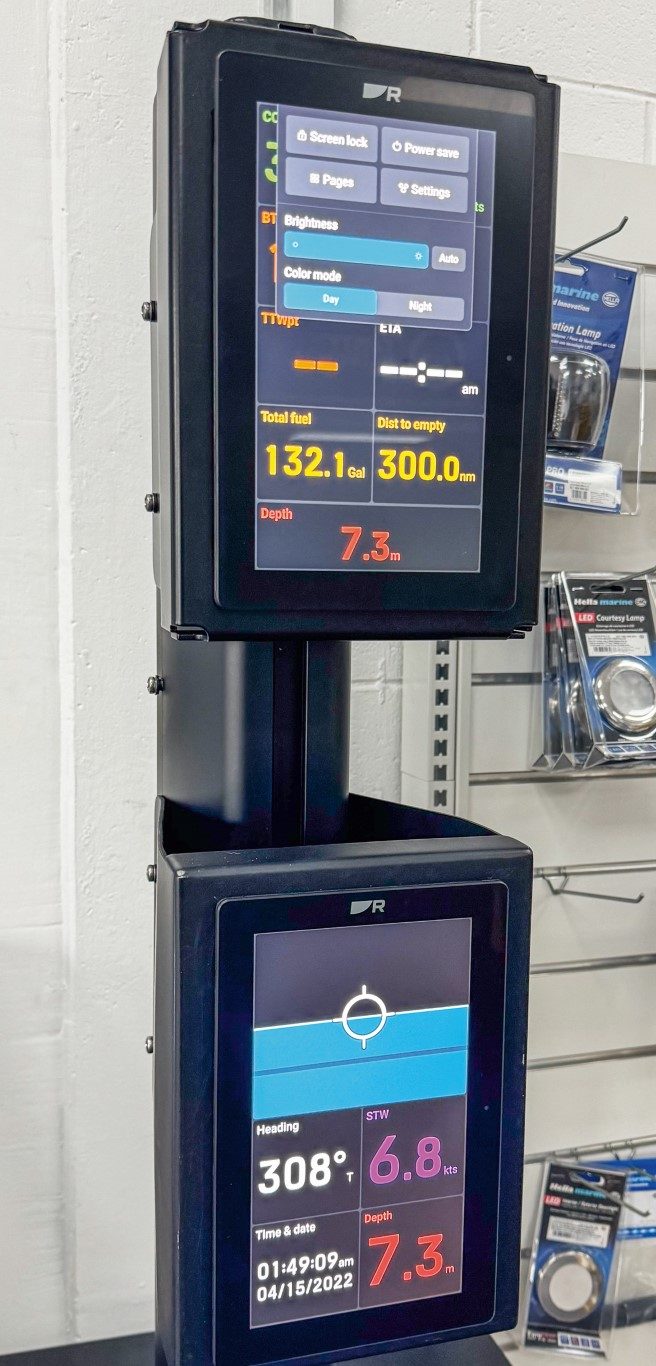
Successful we were!
However in this particular race I would put it more down to crew work and experience than instruments alone. The instruments were wonderfully visible in the harshest of conditions, and I’m sure on longer races would come into their own where close choices of sails are required.
If you’re looking at a practical, great performance sailing solution, have a close look at Raymarine Alpha displays. Not much arguing about their value when you get Line Honours!



